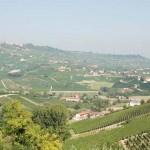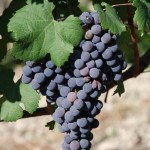Mauro Mascarello, Monprivato and Ca d’Morissio; Barolo legends
Author: David Berry Green
Week 14 of wine adventures in Piedmont
 If Serralunga d’Alba’s Baroli have a Vosne-Romanée character and quality about them, then those of Castiglione Falletto across the valley resemble Chambolle-Musigny, and Monforte d’Alba, Gevrey Chambertin (or, if you’re more at home in the Gironde then substitute Vosne with Pauillac; Chambolle with Margaux and Gevrey with St.Julian!) For compared to the cool white marl soils of Serralunga, imparting formidable structure as well as grace to its wines, Castiglione Falletto’s warmer, softer, sandier, clay rich loam deliver deft sensuality, and Monforte’s ancient sandstone seam deep-seated muscle.
If Serralunga d’Alba’s Baroli have a Vosne-Romanée character and quality about them, then those of Castiglione Falletto across the valley resemble Chambolle-Musigny, and Monforte d’Alba, Gevrey Chambertin (or, if you’re more at home in the Gironde then substitute Vosne with Pauillac; Chambolle with Margaux and Gevrey with St.Julian!) For compared to the cool white marl soils of Serralunga, imparting formidable structure as well as grace to its wines, Castiglione Falletto’s warmer, softer, sandier, clay rich loam deliver deft sensuality, and Monforte’s ancient sandstone seam deep-seated muscle.
Monprivato (above) is one of Castiglione Falletto’s prized vineyards, a 6.20 hectares nugget and  virtual monopole (a fact still being contested as the regions ‘Mentione Geografica’ – or Crus to you and – I are being finalised in Rome) belonging to the Mascarellos of Monchiero: Mauro (right), Maria-Teresa, Giuseppe and Elena. It’s a sunbed of a vineyard: the vines lying on vertiginous, blanched limestone soil, and at whose heart lies the priceless Ca d’Morissio plot (see the video of me talking to Mauro about this below). The key to unlocking Ca d’Morissio’s magic is essentially through its history (planted in 1921) and clonal selection (Michet), which together combine to saturate the senses in a way that the likes of Le Musigny or Chateau Margaux are capable of. Made only in exceptional years, the most recent being 2001 and 2003, Barolo Riserva Ca d’Morissio fuses pre-eminence, structure, texture and elegance with a range of aromas and flavours that defy description. The 2001 should be drinking at its best from 2020.
virtual monopole (a fact still being contested as the regions ‘Mentione Geografica’ – or Crus to you and – I are being finalised in Rome) belonging to the Mascarellos of Monchiero: Mauro (right), Maria-Teresa, Giuseppe and Elena. It’s a sunbed of a vineyard: the vines lying on vertiginous, blanched limestone soil, and at whose heart lies the priceless Ca d’Morissio plot (see the video of me talking to Mauro about this below). The key to unlocking Ca d’Morissio’s magic is essentially through its history (planted in 1921) and clonal selection (Michet), which together combine to saturate the senses in a way that the likes of Le Musigny or Chateau Margaux are capable of. Made only in exceptional years, the most recent being 2001 and 2003, Barolo Riserva Ca d’Morissio fuses pre-eminence, structure, texture and elegance with a range of aromas and flavours that defy description. The 2001 should be drinking at its best from 2020.
Santo Stefano is another thoroughbred (see the other video of Mauro below) vineyard in the Mascarello stable. Located in the Monforte hamlet (or ‘Frazione’) of the same name its character and quality are derived from a higher percentage of yellower sand in the calcareous clay mix; a trait indeed of much of Monforte. The result is an emphatic, more classical ‘tar and roses’ Barolo, of purple sage, while retaining that filigree and tiny red berry fruit quality etched on all Giuseppe Mascarello Baroli; a quality achieved through respectful vineyard management, fine fruit selection via a sorting table, long cement ferments and equally prolonged ageing in bus-sized slavonian botte.
Friday night’s ‘Gran Gala’ banquet marked the start of a three day ‘Piacere, Barbaresco’ (‘Barbaresco, it’s a pleasure’) regional festival – an annual event comprising vineyard tours, tastings and talks; the perfect opportunity to witness the ageing potential of Barbaresco. The dinner was staged at Treiso’s famous ‘La Ciau del Tornavento’, where a pot-pourri of producers, journalists and lucky few were treated to a traditional menu (carne cruda, courgette flower, hand-pressed plin/ravioli, a ‘tenerone’ fillet of beef and a dish comprising five desserts in one!) matched by four Barbareschi going back 30 years. Aziende Agricola Castello di Neive scooped the Oscars with its 1988 Riserva Santo Stefano; pinpoint refinement with perfumed black truffle notes, sweet, sweet fruit and cleansing acidity, with the plin…and still ten years off its best. The 1979 wine from I Produttori del Barbaresco had hit its apogee, yet remained a delight with a leather, Clos de Vougeot-esque iron-in-velvet gloveness; a fine match for the beef. And how interesting that the dinner’s most successful wines were those traditionally made and the least admired, on my table anyhow Pelissero’s cinnamon-flavoured 1995 Vanotu; a barrique-aged spicy brew…
 The next day’s tasting featuring 52 producers, a third of the community, showing promising 2006 and 2005 vintages, uncannily had the same result: a significant minority still relying upon rotofermentors and French barrique ageing that tasted long on clout, spicy punch, big juicy fruit and chewy tannins but short, when compared to their more traditional neighbours, on finesse, subtlety, perfume, beauty…indeed on all that traits that mark Barbaresco and Barolo out as among the world’s finest wines. But then, according to one such cantina, ‘rotoformentor plus French barrique’ is the ‘traditional way of making Barbaresco and results in better wine’ (or was that higher scores?)!
The next day’s tasting featuring 52 producers, a third of the community, showing promising 2006 and 2005 vintages, uncannily had the same result: a significant minority still relying upon rotofermentors and French barrique ageing that tasted long on clout, spicy punch, big juicy fruit and chewy tannins but short, when compared to their more traditional neighbours, on finesse, subtlety, perfume, beauty…indeed on all that traits that mark Barbaresco and Barolo out as among the world’s finest wines. But then, according to one such cantina, ‘rotoformentor plus French barrique’ is the ‘traditional way of making Barbaresco and results in better wine’ (or was that higher scores?)!
Next week: the 2009 harvest begins at Cantina Mascarello Bartolo!


